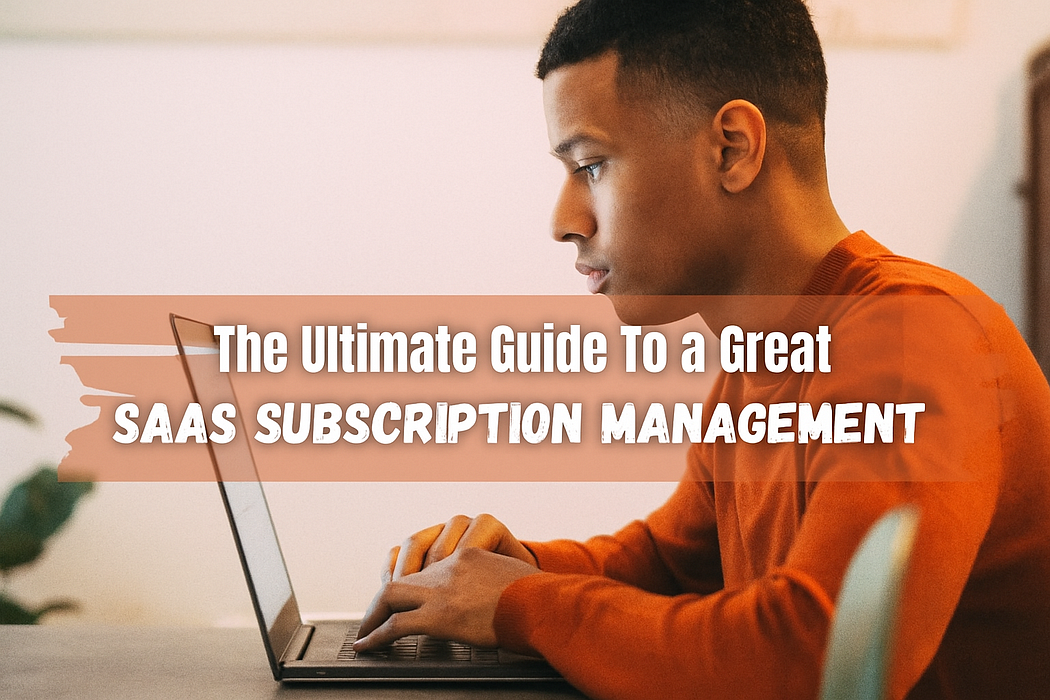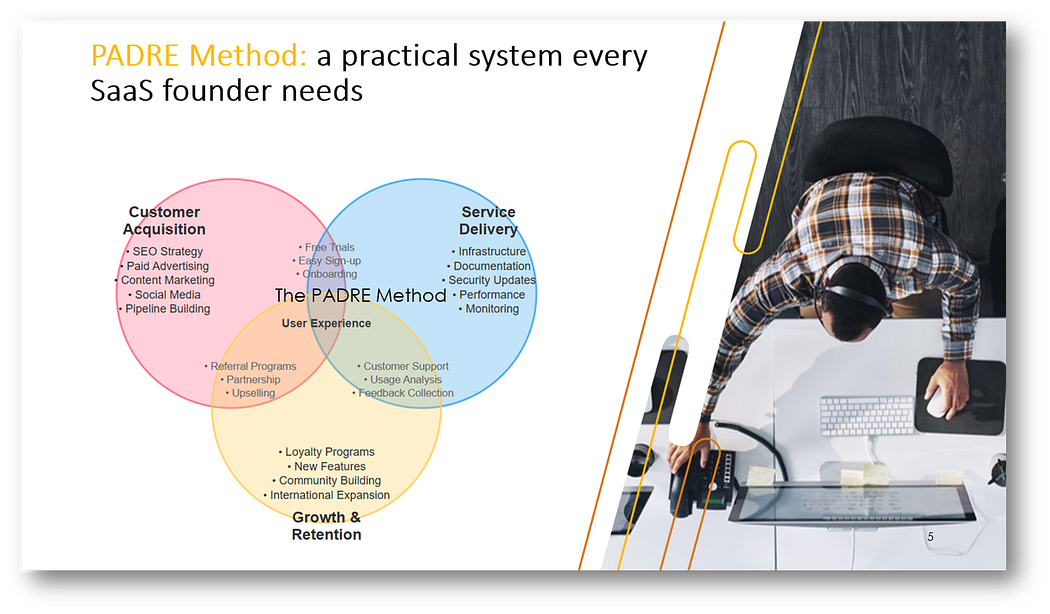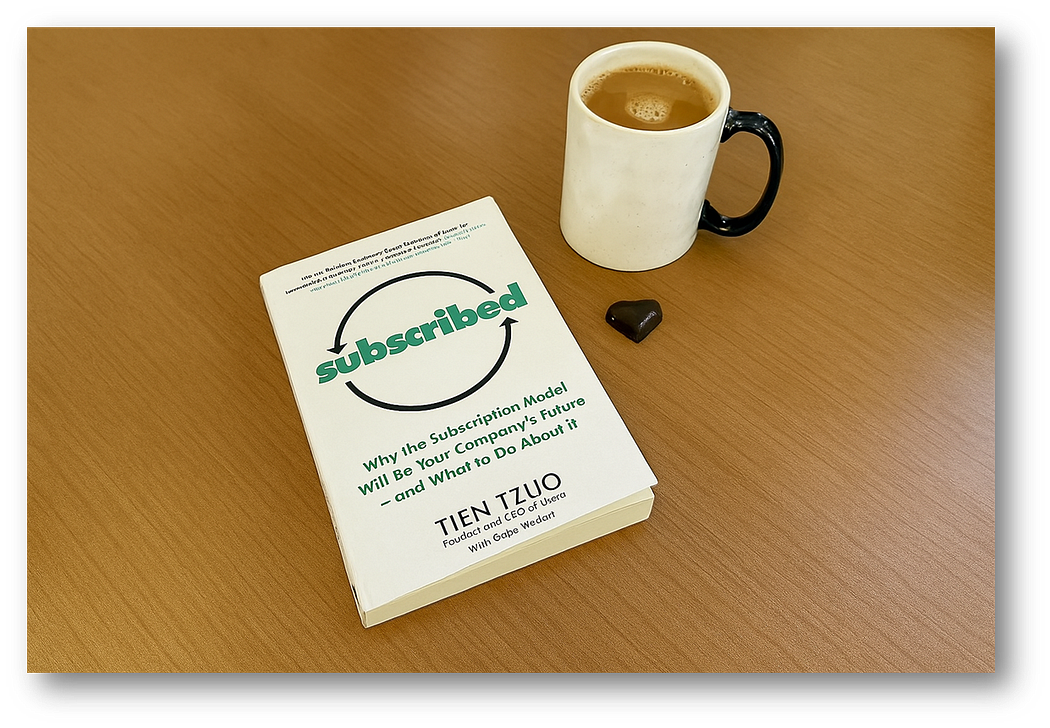Sonu Goswami (SaaS content writer) Subscription Business Model Guide (2025): SaaS Growth
Posted / Publication: Medium – Sonu Goswami, SaaS Content Writer | B2B Specialist
Day & Date: August 19, 2025 (Tuesday)
Article Word Count: 2,310 words
Article Category: SaaS Growth / Subscription Business Models
Article Excerpt / Description (shortened version): A practical guide to SaaS subscription models using Tien Tzuo’s PADRE framework. Covers outcome-based pricing, churn reduction, and actionable growth strategies for founders.

SaaS subscription business model guide. Learn Tien Tzuo’s PADRE framework, outcome-based pricing, churn reduction tactics, and proven growth strategies.
Press enter or click to view image in full size
SaaS Subscription Management
Your SaaS dashboard shows 500 users. Yesterday it was 520.
Last month’s revenue: $12K. This month: $9K.
You’re building features customers ask for, but they still leave. Sound exhausting? It was for me too.
I grabbed Tien Tzuo’s Subscribed after our churn hit 15% monthly. Brutal. The first change I made? Ditched our $29/$59/$99 feature tiers for outcome-focused pricing tied to customer growth goals.
Next, I rebuilt our onboarding. Instead of a product tour, users got immediate value — personalized insights based on their data within 5 minutes of signing up.
Two months later: onboarding completion up 25%, churn down to 6%, MRR climbing steadily.
Here’s what I learned about subscription businesses that actually work.
Who is Tien Tzuo and Why This Book Matters
Tzuo built Zuora from zero to billions. His platform handles subscriptions for Zoom, Slack, The New York Times — companies that cracked the retention code.
Subscribed isn’t theory. It’s battle-tested insights from thousands of subscription businesses. Tzuo has seen what kills growth and what drives it.
This matters because most SaaS founders (myself included) think like traditional software companies. Build product, sell licenses, hope customers stick around.
That approach is broken.
The Shift From Features to Outcomes
Here’s how most of us think: Build cool features → Market the features → Get signups → Cross fingers they don’t churn.
Tzuo flips this: Understand customer outcomes → Design services around those outcomes → Price for results → Continuously evolve.
Companies using outcome-based pricing see 30% better retention than feature-based pricing. Yet most SaaS still operates like Microsoft Office from 1995 — pay once, get features, good luck.
The subscription economy works differently.
The Customer-Centric Subscription Mindset
“Stop selling features. Start selling outcomes.”
Old way: “Our analytics dashboard costs $99/month” New way: “Our Growth Intelligence service delivers weekly performance insights, automated recommendations, and quarterly strategy reports — all tailored to your business goals”
This isn’t marketing speak.
When customers pay for results instead of tools, they stay longer because your service grows with their business. They’re not buying software — they’re buying success.
Tzuo calls this the “subscription mindset.” Instead of asking “What features should we build?” ask “What outcomes do customers want to achieve?”
Key takeaway: Price around customer success metrics, not product capabilities.
Breaking Down the PADRE Framework
Subscribed gives you PADRE — a practical system every SaaS founder needs:
Press enter or click to view image in full size

SaaS founder needs
Pipeline: Marketing That Actually Converts
Stop talking about features. Talk about problems.
Your content should address specific pain points your customers face today. Not “our AI-powered dashboard” but “stop losing customers because you can’t spot churn signals.”
Most SaaS marketing sounds the same. Generic benefits, feature lists, meaningless claims. Successful subscription companies create content that solves real problems.
Takeaway: Your marketing should solve problems, not list features.
Acquire: Frictionless Onboarding
Your signup process should remove barriers, not create them.
Zoom grew because they made their core value immediately accessible. No lengthy demos, no sales calls, no “let us show you around” nonsense.
Users could join a meeting in 10 seconds. Value delivered instantly.
Takeaway: Value delivery should happen in the first session, not after training.
Deploy: Immediate Value Delivery
Customers should experience your product’s value within minutes, not days.
This means designing your product experience backwards from the “aha moment.” What’s the one thing that makes users go “wow, this solves my problem”?
Then optimize everything to get them there faster.
Takeaway: Map your customer’s path to success, then optimize for speed.
Run: Continuous Service Optimization
This separates subscription businesses from traditional software companies.
You’re not just maintaining code. You’re continuously improving service delivery based on how customers actually use your product.
Traditional software: Ship it and forget it. Subscription software: Ship it and improve it forever.
Takeaway: Build feedback loops into your product development process.
Expand: Growth Through Retention
New customer acquisition gets all the attention. But expansion revenue drives profit.
The book shows how to spot expansion opportunities within your existing customer base instead of constantly hunting new users.
It’s cheaper to grow existing customers than acquire new ones.
Takeaway: Make current customers more successful before chasing new ones.
Lessons From Real Businesses
Tzuo doesn’t just explain concepts — he shows you how companies actually do this.
Netflix doesn’t sell movie access. They sell entertainment outcomes. Spotify doesn’t sell music streaming. They sell the perfect soundtrack for your life.
One B2B example stuck with me: A manufacturing software company stopped selling licenses and started offering “operational efficiency subscriptions.”
Instead of charging for software access, they guaranteed specific productivity improvements and charged based on results achieved.
Revenue per customer increased 300% in two years.
That’s outcome-based pricing in action.
What Works (And What Doesn’t) in Practice
What the book gets right:
- Clear frameworks you can implement immediately
- Real metrics and benchmarks for measuring success
- Practical advice on pricing strategy and customer segmentation
- Honest discussion of common subscription model pitfalls
Where it falls short:
- Hess applicable for small SaaS)
- Limited coverage of freemium model strategies
- Pricing recommendations may not work for all verticals
avy focus on enterprise examples (le
The book shines on strategy but could use more tactical implementation details for bootstrapped founders.
What SaaS Founders Can Apply Today
Reading Subscribed changed how I think about product development.
Press enter or click to view image in full size

Subscribed by tien tzuo
Instead of building features customers might want, we started tracking what outcomes they actually need.
We implemented monthly “value audits” with customers — not to sell upgrades, but to understand what results they’re achieving and where we could improve service delivery.
This simple change led to our highest retention rates ever.
“Customers don’t care about your product roadmap. They care about their business outcomes.”
Align your service with their success, and churn becomes manageable.
Key insight: Track customer outcomes, not feature usage.
Implementation Strategy for SaaS Founders
Here’s how to apply Tzuo’s framework to your business:
1. Audit your current value proposition
- What outcomes do customers achieve using your product?
- How do you measure and communicate that value?
- Where are customers getting stuck or churning?
2. Redesign your pricing model
- Test outcome-based pricing with a small customer segment
- Create service tiers based on business results, not features
- Build expansion revenue into your core offering
3. Implement continuous feedback loops
- Regular check-ins focused on customer success metrics
- Product development driven by usage data, not feature requests
- Service improvements based on customer outcome achievement
Bottom Line: Is Subscribed Worth Reading?
If you’re running a SaaS business and struggling with churn or unpredictable revenue, absolutely.
The book provides a clear framework for transitioning from product-focused to customer-focused business models.
Subscribed isn’t revolutionary — it’s practical. Tzuo takes complex subscription economy concepts and makes them actionable for real businesses.
The PADRE framework alone justifies the time investment.
Most importantly, this book will change how you think about customer relationships. Instead of viewing users as buyers of your product, you’ll start seeing them as partners in achieving their business goals.
Ready to Transform Your SaaS Model?
The subscription economy isn’t coming — it’s here.
Companies that adapt thrive. Those that don’t get left behind.
If you’re building SaaS and struggling with churn, don’t just keep adding features. Apply the subscription mindset: design around outcomes, not tools.
I’ve helped founders implement this shift, cutting churn and unlocking steady recurring growth.
Ready to transform your SaaS growth model? Let’s connect if you want actionable steps tailored to your business — I’ll share what worked and what didn’t from applying this framework.

